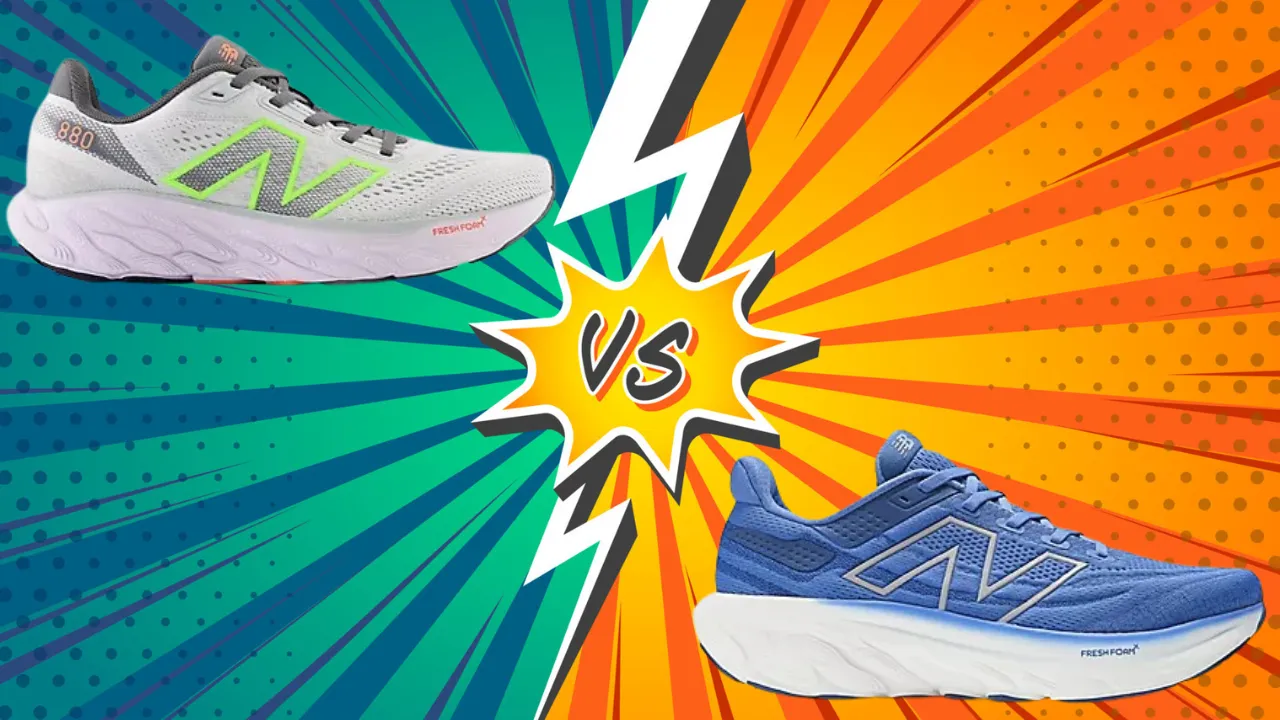New Balance continues to dominate the running shoe market with industry-leading technologies that keep athletes comfortable mile after mile. Two of their most popular neutral cushioned models, the 880v14 and the Fresh Foam X 1080v13, utilize the renowned Fresh Foam X midsole foam to provide responsive softness underfoot.
But with differing tuning and specs between the shoes, runners may wonder which can better match their needs across training, recovery, and racing. This face-off reveals the distinctions.
Comparison Table Between NB 880v14 and 1080v13:
| Spec | New Balance 880v14 | Fresh Foam X 1080v13 |
|---|---|---|
| Launch Year | 2024 | 2023 |
| Stability | Neutral | Neutral |
| Flexibility | Moderate | Moderate |
| Sizing | True to size | True to size |
| Weight | 8.5 oz (M), 7.4 oz (W) | 9.2oz (M), 7.9oz (W) |
| Cushioning | Medium | Plush |
| Outsole | Rubber | Blown rubber |
| Midsole | Fresh Foam X | Fresh Foam X |
| Upper | Mesh | Engineered mesh |
| Retail Price | $139.99 | $164.99 |
Features Comparison:
Materials:
The outsoles on both the 880v14 and 1080v13 are made of durable rubber that grips surfaces well. The 880v14 incorporates flex grooves for flexibility, while the 1080v13 has blown rubber which is softer. Inside, they share the Fresh Foam X midsole technology for responsive, plush cushioning. But the 1080v13’s version aims for maximum softness.
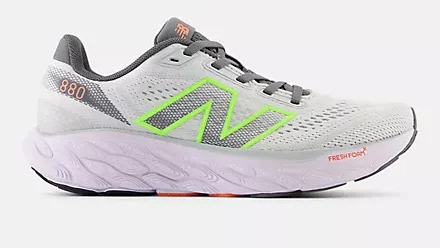
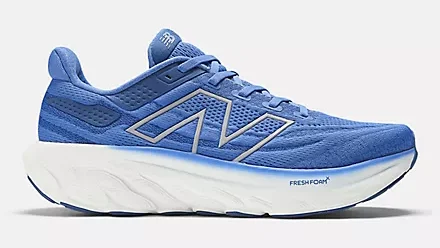
Up top, the 880v14 boasts a no-sew mesh upper with synthetic overlays for structure and support. It provides a secure fit but is still breathable. The 1080v13 also utilizes an engineered mesh upper, but the seamless construction has varying densities for zoned breathability and stretch where needed. This makes its forefoot particularly breathable and flexible to accommodate natural foot splay.
Durability:
The 880v14 and 1080v13 are quite durable options in New Balance’s lineup. The rubber outsoles are sturdy and show minimal signs of wear even after miles of use. Even the engineered mesh uppers stand up well to abrasions. Reviewers have gotten hundreds of miles out of both models before considering retirement.
One notable durability difference is that the 1080v13’s softer blown rubber outsole tends to wear down more quickly than the firmer rubber of the 880v14.
So while the 1080v13 remains impressively durable, the outsole contributes to a slightly shorter overall lifespan than the 880v14. Those heavier on their toes may get better mileage from the 880v14.
Fit:
These New Balance models both fit true-to-size for most wearers. The 880v14 has a traditional medium width through the midfoot and toe box. Those with narrower feet praise the secure midfoot wrap and lack of slipping inside the shoe. But some note the toe box runs slightly long.
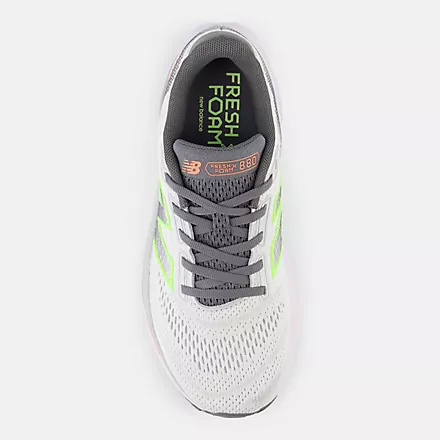
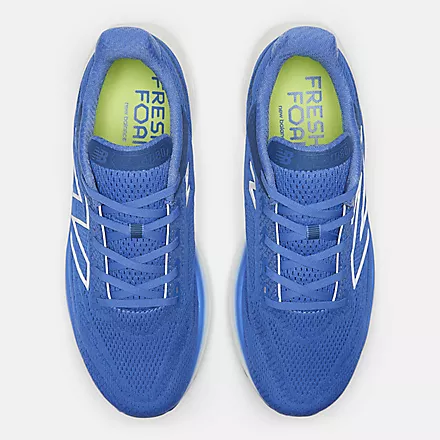
The 1080v13’s engineered mesh upper uses a 3D print design for light structure where you need it. Reviewers say it fits like a well-loved favorite right out of the box.
The stretch zones prevent pressure points for wider feet, but it still suits narrower feet too. One complaint is that debris can enter through the breathable mesh if running on trails.
Cushioning:
The 880v14 and 1080v13 both utilize New Balance’s renowned Fresh Foam X midsole technology to provide a cushy underfoot feel. However, the foam is specially tuned in each shoe to promote different sensations.
The 880v14 features a medium density foam that aims to balance soft comfort and energetic bounce – enough cushioning for everyday mileage with a responsive toe-off.
Meanwhile, the 1080v13 maximizes plush softness by using a higher-volume Fresh Foam X foam to create an ultra-cushy feel. Testers describe it as like walking on clouds or pillows.
This makes the 1080v13 preferable for slower recovery days and runners wanting a softness that envelops the foot through each stride. The 880v14 offers cushioning geared more for uptempo runs rather than pure comfort.
Stability:
As neutral shoes, both models offer straightforward cushioning without pronation control or stability mechanisms. They allow natural motion through the gait cycle.
The 880v14’s midfoot synthetic overlays dynamically hug the arch to prevent rolling too far inward without being overly controlling. Reviewers mention the fit feeling almost customized. The ankle collar has light padding as well to secure the rearfoot in neutral alignment.
In contrast, the 1080v13 utilizes the 3D print upper design to create structure rather than overlays. Printed areas are more rigid where needed to maintain shape and midfoot integrity through foot strikes.
The partial bootie construction also integrates the tongue to hug the midfoot snugly without squeezing. Both execute neutral stability well but do it differently.
Value:
At the $164.99 MSRP for the 1080v13 and $139.99 for the 880v14, neither model is cheap. And prices remain firm even 1-2 years after release, speaking to their construction quality and technologies. Most view both as solid investments.
However, the 1080v13 costs nearly $25 USD more. Reviewers feel both deliver premium comfort and support in attractive, modern designs. But because the 880v14 incorporates comparable Fresh Foam X technology at a more affordable price point, it may have greater overall value for shoppers deciding between the two.
Performance Comparision:
Walking:
The ample cushioning of the 1080v13 makes it the ultimate choice for walking comfort. Testers have logged miles effortlessly thanks to the ultra-soft Fresh Foam X midsole that compresses easily underfoot. The breathable engineered mesh upper perfectly balances flexibility and support for natural striding.
The 880v14 isn’t quite as plush underfoot but provides a responsive feel that can energize walking strides. Just don’t expect luxurious softness right away. Break-in takes around 1 week before it starts feeling broken-in and flexible.
Running:
For running, the 880v14 gets the narrow edge. Multiple testers rank its smooth, slightly firmer ride among their favorite running shoes this year. There’s enough bounce-back to keep turnover quick for faster paces but with next-level cushioning for logging daily miles.
The 1080v13 isn’t far behind as a top-tier running option either though. Reviewers praise the energetic toe-off its blown rubber outsole provides. And the Fresh Foam X midsole absorbs shock exceptionally on heel strike before rolling forward smoothly.
Standing All Day:
Nurses and retail workers alike praise the 1080v13’s plushness for combatting foot fatigue on long shifts. The soft Fresh Foam X midsole compresses gradually to provide continual relief rather than flattening completely over time like some shoes. And the roomy toe box with engineered mesh resists pinching or cramping.
The 880v14 isn’t quite as beloved for all-day wear due to its slightly firmer cushioning. But it remains comfortable for long periods of walking and moving around. Pure standing still is where the 1080v13 pulls ahead noticeably.
Plantar Fasciitis:
For plantar fasciitis specifically, testers give the nod to the 1080v13 for its ultra-soft, thick midsole. That plush construction absorbs shock extremely well rather than forcing sore heels to bear too much pressure. The shoe helps improve symptoms noticeably over time rather than provide temporary relief.
While still decently cushioned, the 880v14 falls slightly behind for PF comfort. A small percentage of wearers do use it as their daily trainer with PF. But more find that it lacks the critical underfoot softness their heels demand.
Conclusion: Which is Better?
In the battle between the New Balance 880v14 and Fresh Foam X 1080v13, both premium neutral cushioned trainers have their strengths. But the 880v14’s balanced soft comfort and energetic bounce along with its moderate weight gives it a slightly better fit for most jogging and marathon training needs.
For pure recovery days and standing comfort, the extra-plush 1080v13 has the luxurious, cloud-like sensation that will better treat sore feet and joints. So while the 1080v13 has its ultra-soft niche.
Overall the 880v14 proves more versatile for various runners’ daily mileage thanks to its blend of cushioning, response, flexibility and support. It wins by a nose given its all-around capabilities.

